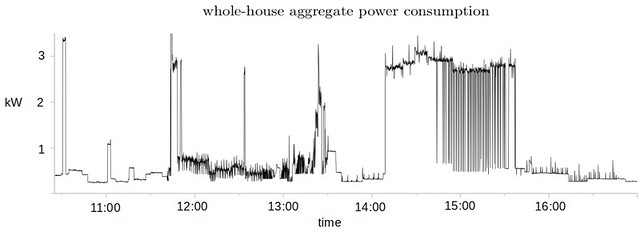What is a smart meter?
This blog entry is part of a series of posts introducing the topic of smart meter disaggregation.
Your existing electricity meter probably looks something like this:
(image taken by Kristoferb at en.wikipedia)
By 2019, the UK government have mandated every electricity meter in homes and businesses will be replaced by a “smart meter” (that’s a grand total of 53 million meters). A smart meter is simply a digital meter with some basic communications functions. It will be paid for and installed by the utility company. It will talk to the utility company over a GPRS data connection; and it will also be able to talk to the “home area network” to provide data to in-house energy displays.
The draft spec for smart meters in the UK was published by the Smart Metering Design Group in August 2011. The specification states that the meter must be able to supply meter readings to the home area network at a rate of one reading every five seconds. The meter will measure voltage, real power and reactive power (in both directions). Some utility companies have already started to install smart meters; British Gas plan to have 2 million smart meters installed by the end of 2012 (Centrica, 2010).
If you can’t wait for a smart meter to be installed then you could buy and install a “home energy monitor”. These are available for around £40; although some utility companies give them away for free. Home energy monitors are user-installable. I used a Current Cost home energy monitor for my MSc project on disaggregation. It recorded a sample of apparent power once every six seconds.
This is a reading produced by my Current Cost home energy monitor:
The value of sample at time t is the sum of the power being consumed by every appliance active at time t.

